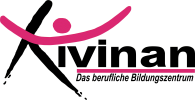Jüdisches Leben in Zeven- Schüler rekonstruieren Geschichte -Jewish Life in Zeven (Germany) - Students reconstruct history |
 |
| Startseite | Ausstellungsthemen | Partner | Multimedia | Sitemap |
Jewish life in Zeven– Students reconstruct historyAn overview of topics on display at the Museum Kloster Zeven from November 10, 2010 to March 6, 2011A short history of the Jewish community in ZevenPresented by Kevin JahnsThe Jewish community of Zeven existed since 1842. To hold a service its members needed at least ten men of age. As this requirement could not be fulfilled, they united with the Jewish community of Bremervörde. In 1867 the Jewish cemetery for the members of the Zeven community was laid out at the Kleine Ahe. Religious teachings in Judaism started in Zeven from 1933. On February 28, 1937 the Prayer Room was consecrated at Neugartens` home. Many items of its furnishings were from dissolved synagogues in Deutsch-Eylau, Rüthen, Insterburg and Lüneburg. In an attempt to preserve Jewish culture, the members of the Zeven community had financed these items. The consecration of the Zeven synagogue was perhaps one of the last – if not the last in prewar Germany. The Jewish families of ZevenPresented by Oliver Lepel and Jonathan SeesinkAt this station you see information about the lives of Jewish families in Zeven especially during the time of National Socialism. Which families were deported and murdered by the Nazi authorities? Who could escape early enough? Have Jews in Zeven ever been respected before 1933 by the rest of the citizens? Exploring those facts was of great value to us because these families were part of the rural community we are living in. The situation of Jewish people in rural areasPresented by Matthias DreierSignificant about the situation in rural areas is that Jews were mostly well- integrated in their local communities but the persecution after the Nazi seizure of power was often even worse than in cities. The problem was that Jewish people were individually known so that local NSDAP-party leaders could easily identify them and use cruel and unfair treatment of Jewish families and individuals to profit from it in their personal careers. In spite of their persecution many Jews were not able to emigrate because, on the one hand, they were very much in touch with their home town and, on the other hand, there were high emigration taxes which made it financially almost impossible to leave on time. Economic persecution under National SocialismPresented by André GuduschIn working life as well the Jews were oppressed by the National Socialists. Most of the Jews who lived in the country at this time worked as cattle traders. The National Socialists tried to segregate and finally exclude the Jews from society. First the cattle trade between non-Jewish and Jewish people was frowned upon. Later it became forbidden. So a lot of Jews lost their work and their lives became unbearable. The pogrom of 1938Presented by Sönke ThiesIn 1938 the persecution of German Jews reached a new quality. The SA, the party militia of the NSDAP, organized a violent campaign against Jewish communities and their property with the assistance by the SS and police authorities. This so-called “Reichskristallnacht” lasted from the night of November 9 until November 11. Jewish citizens were mistreated, killed or arrested. Synagogues were set on fire, Jewish homes and businesses looted and destroyed. About 30,000 Jews were deported to concentration camps. About 400 were murdered. Shortly after, German Jews were forced to pay an extra property tax as a remedy for the destruction caused by the pogrom. This initiated the expropriation of the German Jewish community by the Nazi authorities. In Zeven the pogrom started in the early morning of November 10. The members of all Jewish families were arrested at Neugartens` home after they had been transported through town on an open truck under the applause of several Zeven citizens. After women and children had been set free, the men were carried to the Gestapo in Wesermünde. All Jewish men who were over 16 years old were deported to Sachsenhausen concentration camp near Berlin. There they were tortured for several weeks. The Prayer Room at Neugartens`home was demolished and its precious objects were stolen. Its furnishings were transported to the Marktplatz (today bus station), piled up and set on fire by a teacher. Several classes were marched to the scene to watch this act of destruction. The origin and course of the projectPresented by Lennart GrimmBased on the ideas by Sylke Schumann, scientific researcher in Judaism from Potsdam University, and fund raising by Dr. Klaus Volland the exihibition “Jewish life in Zeven – Students reconstruct history” emerged as a cooperation project of the constructional department and the technical secondary school (Fachgymnasium Technik) of the Kivinan Center of Further Education with external partners. So, further assistance was provided by Luise Del Testa, the head of the Museum Kloster Zeven, and Jan Rosing from the same museum as well as by Ronald Sperling, historian. The artist Ola Lewin contributed the video installation. The students who recreated the Torah shrine and its surrounding furnishings with the help of three historical photos and investigated background information were supported by the specialist subject teachers Heinz Kuhr and Thomas Grunenberg. After the opening of the exhibition, the project will be continued with the revision and publication of student papers on certain aspects of Jewish history in Germany. Another job will be to program and design websites for the Internet on contents of the exhibition and on the opening ceremony. This task will be performed with the support by Ferdinand Plönnigs, teacher in information technology. Furthermore...Please watch some pictures HERE |
Neuigkeiten:Vorstellung des Projekts in Berlin16 .03.11 Am 14. März stellten Ola Lewin, Sylke Schumann und Thomas Grunenberg das Projekt auf dem Präsentationstag der Stiftung \\\"Zurückgeben\\\" im Jüdischen Museum Berlin vor. Ausstellung im Klostermuseum Zeven17 .02.11 Die Ausstellung im Klostermuseum wurde wegen hoher Nachfrage bis zum 6. März verlängert. Öffnungszeiten: Im Museum Kloster Zeven, Klostergang 3, 27404 Zeven |

